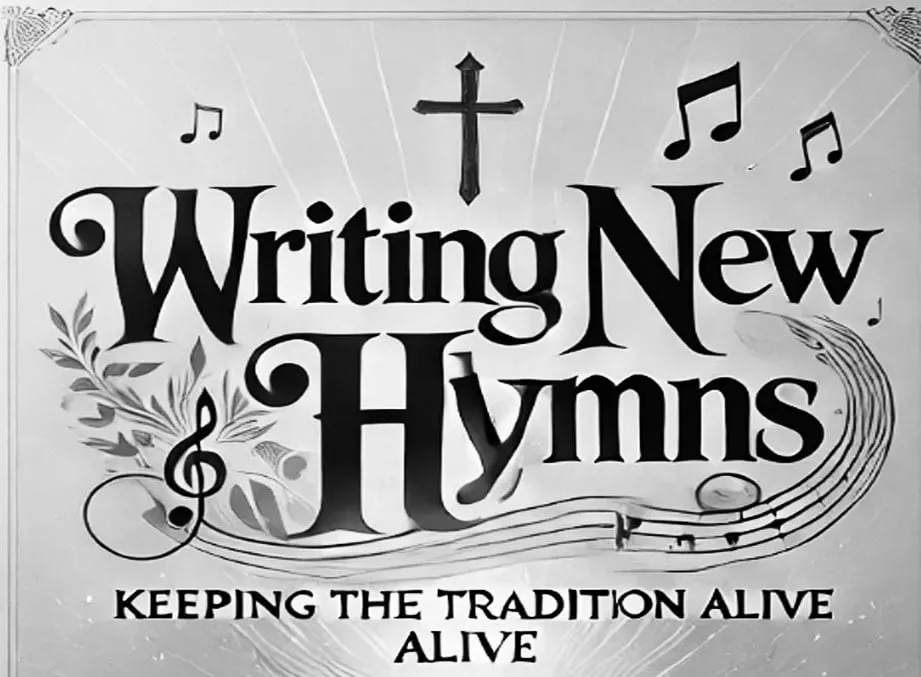Writing New Hymns: Keeping the Tradition Alive

March 04 2025 ; By N. Co
Hymns have been a cornerstone of Christian worship for centuries, offering theological depth, spiritual encouragement, and communal expression of faith. While classic hymns continue to bless congregations, writing new hymns is essential to keep this rich tradition alive for future generations. Whether you are an experienced songwriter or new to hymn writing, here are some practical suggestions to create hymns that resonate with today’s worshippers while honoring the past.
1. Ground Your Hymn in Scripture
Great hymns are rooted in biblical truth. Start by choosing a key passage or theme from Scripture that inspires you. Whether it’s God’s faithfulness, salvation through Christ, or the hope of heaven, ensuring your hymn is scripturally sound will make it meaningful and enduring. Psalms and New Testament letters, especially Paul’s epistles, provide excellent sources for hymn content.
2. Focus on Strong, Poetic Lyrics
Hymns are unique in that they communicate deep theological truths through poetic and memorable lyrics. Here are a few principles to keep in mind: Use clear, rich language that is easy to understand. Incorporate metaphors and imagery that align with biblical themes. Keep lines rhythmic and singable, often using a meter that fits common hymn tunes. Consider rhyming schemes (e.g., ABAB or AABB) to make the hymn more cohesive and lyrical. AI tools can assist in generating rhymes and refining poetic structure, helping hymn writers craft lyrics that flow smoothly while staying faithful to their message.
3. Choose a Singable Melody
A hymn should be easy for a congregation to sing. Many traditional hymns use simple yet beautiful melodies that can be picked up quickly. When writing music for your hymn: Keep the melody within a comfortable vocal range (usually from middle C to high D or E). Use repetition and predictable patterns to aid congregational singing. Avoid overly complex rhythms or unusual time signatures that may be difficult for non-musicians.
4. Consider Using a Familiar Meter
Many hymnals categorize hymns by their meter (e.g., Common Meter (CM) 8.6.8.6., Long Meter (LM) 8.8.8.8.). Writing in a standard meter allows for flexibility—your hymn could be sung to different existing hymn tunes. This can make it easier for churches to adopt your hymn without needing to learn an entirely new melody.
5. Stay Doctrinally Sound and Christ-Centered
Hymns serve as a form of teaching, so it’s crucial to ensure your lyrics reflect sound biblical doctrine. Focus on themes such as God’s grace, the cross, redemption, and the resurrection. Hymns that exalt Christ and align with Scripture will stand the test of time.
6. Test and Refine Your Hymn
Once you have a draft, sing it aloud or have a small group sing it together. This helps identify awkward phrasing, difficult notes, or parts that need improvement. Feedback from church musicians or hymn writers can refine your hymn further.
7. Share Your Hymn with Others
Once polished, introduce your hymn to your congregation or a small worship group. Consider recording a simple version or sharing sheet music online so that others can use it in their worship settings. Platforms such as YouTube, Facebook, Instagram, SoundCloud, and hymn-specific websites like Hymnary.org provide excellent opportunities for reaching a wider audience. Uploading a lyric video or a simple performance recording can help engage listeners and make it easy for churches to learn and use your hymn. Utilizing social media and worship forums can also increase traction, encouraging more congregations to incorporate your hymn into their services.
Conclusion
Writing new hymns is a powerful way to contribute to the life of the church, preserving the tradition while making space for fresh expressions of faith. By grounding your hymn in Scripture, crafting singable melodies, and ensuring theological depth, you can create hymns that inspire and edify believers for generations to come.

